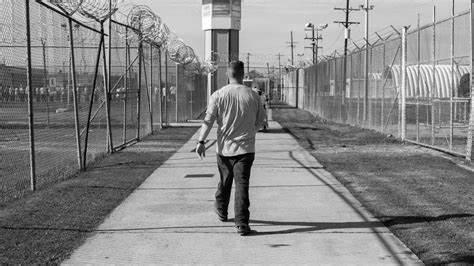Alphonso Woodley Gets All 810 Days Of FSA Credit
The Woodley decision out of the Federal District of Kansas may be the decision that tens of thousands of federal inmates need to finally get First Step Act relief.
The First Step Act was passed in 2018. It was the first significant prison reform package in over two decades. The legislation, signed by next President, Donald J Trump, on December 21, 2018, allows Federal inmates to earn “earned time credits” against their release, for participating in evidence based recidivism reducing programs and other productive activities.
It took nearly four years to finally implement the First Step Act on the ground, at the 122 Bureau of Prisons facilities. It wasn’t until January 13, 2022 that inmates started to actually get relief. However many of them had started the programming needed for the relief, immediately in 2018.
Under the letter of the law the first 365 credits (or days) are applied to early release, provided the inmate has a term of supervised release after the sentence and they are do not have a disqualifying charge. The law itself is clear as to the first 365 credits which are applied to 12 months of early release. What happens to the remaining credits? According to the law they are to be used for RRC which is home confinement and halfway house. However there is a little ambiquity in that section as the amount of RRC is not clearly defined. Becuase the Chevron doctrine was a thing until this past Friday, the BOP was left to interpret that extra time whatever way they wanted.
We personally know of inmates at Yazzoo that received 24 months of halfway house under FSA and 18 months of halfway house out of Montgomery. In the same breath though, we know inmates out of Butner and Coleman that only received 6 months when they had plenty more credits.
Such is the case for Alphonso Woodey out of the Federal District of Kansas.
Like thousands of others, Woodley had been earning credits since his arrival in Federal Prison. He had maintained a good disciplinary record and accumulated 810 days of earned time credits. Woodly should have gone to halfway house or home confinement. Because he already had a house approved for re-entry he petitioned the court under Habeas to have the BOP do what they were supposed to do and let him go to home confinement.
There are some very significant factors here with Woodley. First, there are thousands of federal inmates that should be in halfway house or home confinement now. Woodley earned 365 days towards release and the remaining 445 days towards home confinement, which the judge granted.
. Under a plain reading of this provision of the FSA, which includes
the word “shall”, the BOP is required to transfer a prisoner to prerelease custody or
supervised release if the prisoner is “eligible” as determined under Subsection 3624(g).
Under Section 3624(g), a prisoner is “eligible” if the prisoner has earned ETCs in an
amount equal to the remainder of the prisoner’s term of imprisonment, which remainder
amount has been computed, and the prisoner has met certain benchmarks for the assessed
risk of recidivism. See id. § 3624(g)(1). Respondent has conceded that petitioner is eligible
Case 5:24-cv-03053-JWL Document 8 Filed 05/15/24 Page 5 of 9
6
for placement in prerelease custody. Accordingly, the FSA requires the BOP to place
petitioner in prerelease custody.
Respondent’s excuse for delaying petitioner’s transfer to an RRC is that bed space
is not available in a particular RRC until September. No such condition concerning bed
availability is included among the requirements for eligibility under Section 3624(g),
however, and thus immediate placement in prerelease custody is nevertheless required
under Section 3632(d)(4)(C).
3
As noted above, that statute uses the mandatory “shall” (as
distinguished, for instance, from the provision in Section 3624(g)(3) that the BOP “may”
transfer a prisoner to early supervised release). Numerous courts have held that the BOP
has no discretion to delay or refuse transfer of an eligible prisoner to prerelease custody,
which transfer is mandatory. See, e.g., Doe v. Federal Bur. of Prisons, 2024 WL 455309,
at *1-4 (S.D.N.Y. Feb. 5, 2024) (transfer to prerelease custody was required despite the
prisoner’s participation in the witness protection program); Ramirez v. Phillips, 2023 WL
8878993, at *4 (E.D. Cal. Dec. 22, 2023) (agreeing with interpretation that transfer to
prerelease custody is mandatory, BOP has no discretion not to transfer); Komando v. Luna,
2023 WL 310580, at *4-8 (D.N.H. Jan. 13, 2023) (transfer to prerelease custody was
required despite outstanding detainer; rejecting argument that the BOP had discretion to
determine which prisoners were suitable for placement in prerelease custody), report and
If you know somebody struggling to get their credits feel free to contact info@federalprisontips.com or call (407)735-6995




